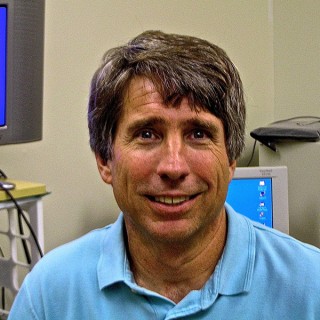
Dr. Christopher Kelley, the Chief Scientist for this project, is the program biologist for the Hawaii Undersea Research Laboratory (HURL) at the University of Hawaii. He is also graduate faculty for the Oceanography Department as well as affiliate faculty at the Hawaii Institute of Marine Biology. As a biologist, his primary responsibilities are the identification and documentation of deepwater fish and invertebrates recorded during HURL’s submersible and remotely operated vehicle (ROV) operations, as well as overseeing the extraction of video annotations for inclusion in HURL’s deepwater animal database and online photo guide. Dr. Kelley also led several projects on the Hawaiian deepwater bottomfish fishery that involved examining the impacts of fishing on bottomfish habitats in the Northwestern Hawaiian Islands prior to the area becoming a monument, reviewing the state’s system of bottomfish Restricted Fishing Areas in the Main Hawaiian Islands, assisting with NOAA Fisheries 5-year review of the bottomfish Essential Fish Habitat (EFH) designations in Hawaii and elsewhere in the Pacific, tracking deepwater snappers in and around the Kahoolawe Island Reserve, and using HURL’s submersibles and ROVs to study the biological communities associated with bottomfish habitats.
As part of his bottomfish research projects, he was awarded multiyear grants to map, with multibeam sonar, the 100- to 400-meter bottomfish depth range around all of the Main Hawaiian Islands. As a result, he gained considerable experience with conducting mapping cruises, as well as incorporating bathymetry and backscatter data into GIS projects and creating products–such as EFH polygons and reserve boundaries–for federal and state agencies. In 2007, he led a multibeam mapping survey on deep seamounts south of Oahu and received an additional grant to examine deepwater coral and sponge habitats on seamounts and ridges in the Northwestern Hawaiian Islands Monument. He is currently working on several projects for the Army, the National Deep Sea Coral Program (DSCP), and the University of Hawaii that include describing the biological communities associated with disposed munitions off Pearl Harbor, extracting and preparing over 40,000 of HURL’s deep sea coral records for inclusion in the new DSCP national database of deep sea corals, and creating the first multibeam backscatter synthesis of the entire seafloor surrounding the Main Hawaiian Islands.
Dr. Kelley received his Ph.D. in 1995 from the University of Hawaii while researching fish reproductive cycles. Prior to joining HURL, he traveled extensively, providing technical assistance for developing fish hatcheries in Indonesia, Taiwan, the Philippines, Egypt, and Cameroon, West Africa. He was also an aquanaut for the Hydrolab Undersea Habitat in 1982, assisting in a study of the ecology and social behavior of Caribbean angelfishes.
Cruises:
